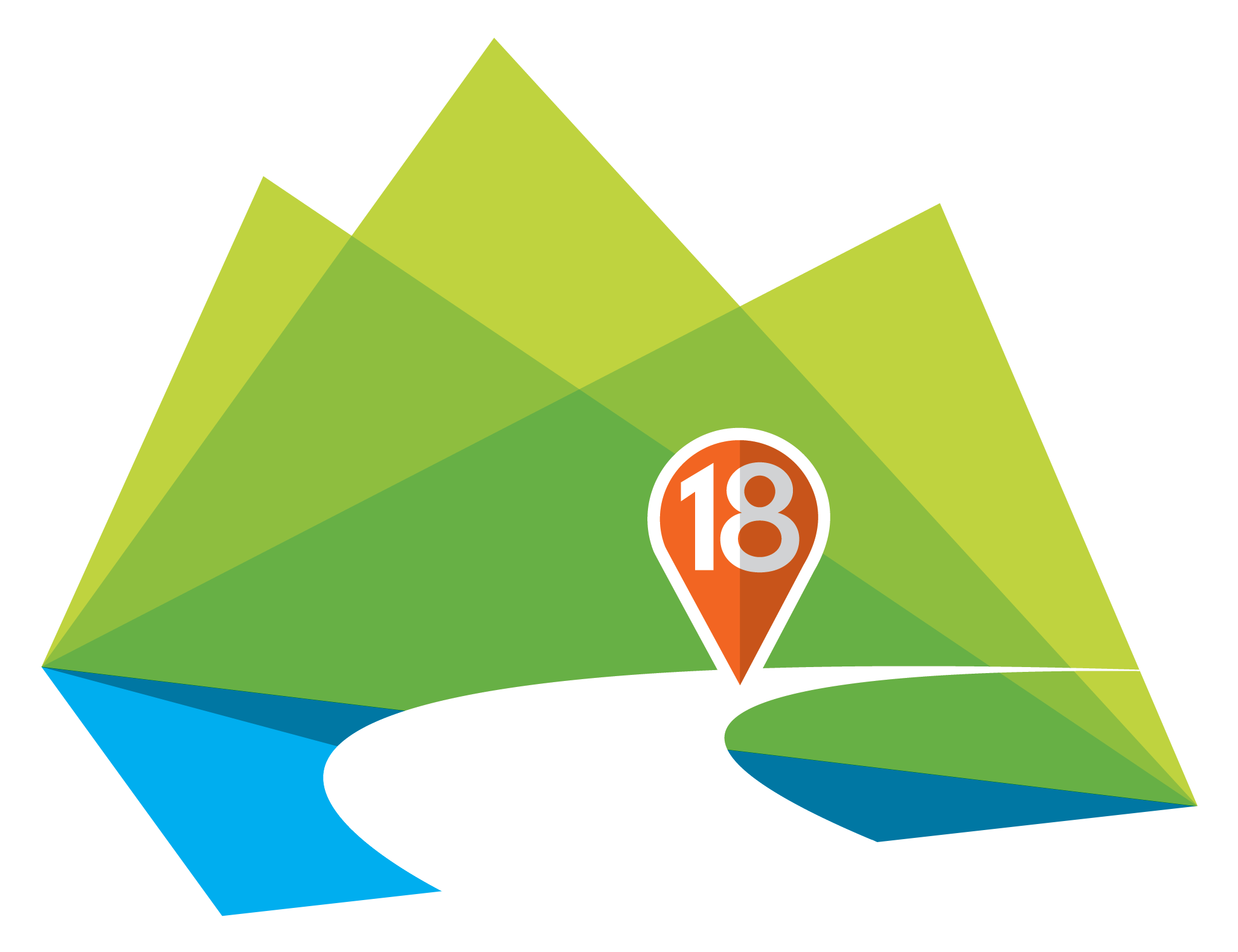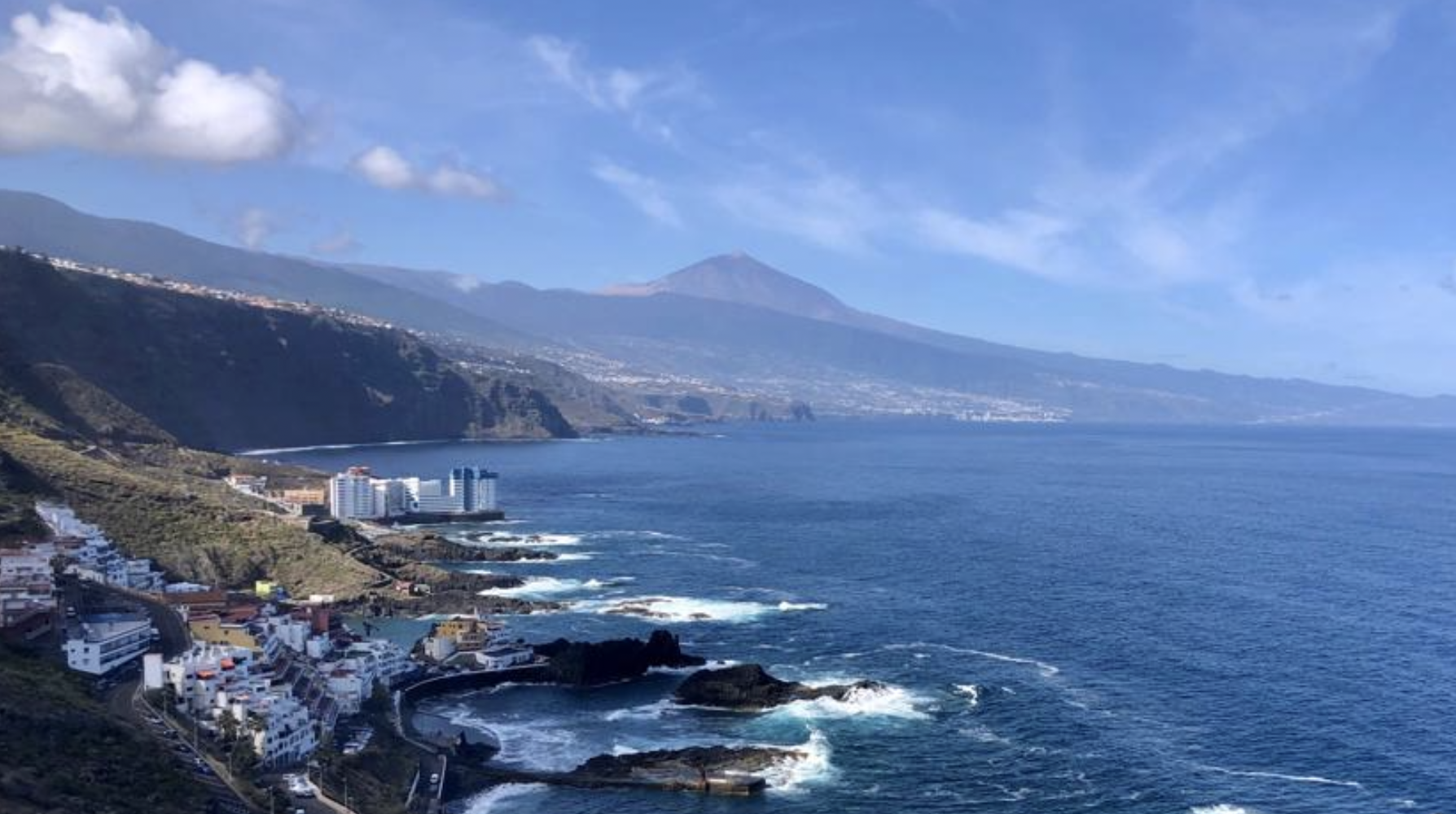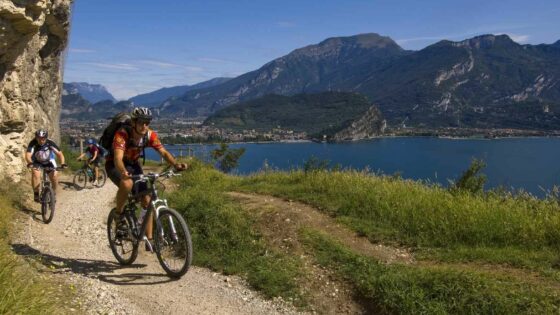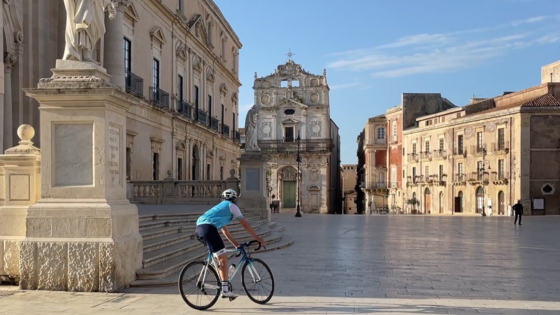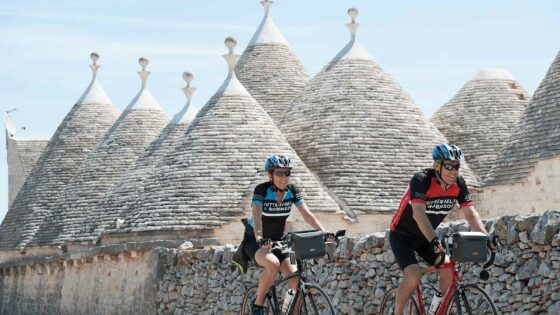Tenerife, the largest of the Canary Islands, beckons with its sunny beaches and vibrant culture. But for cyclists seeking a different kind of adventure, the mighty Mount Teide awaits. Mount Teide is Spain’s highest peak, rising to an impressive 3,718 meters above sea level, and the journey to its summit is a thrilling challenge.
Introduction to Mount Teide’s Cycling Challenge
Unlike other famous climbs, such as the Col de L’Iseran in the French Alps, Mount Teide provides a rare opportunity: a continuous ascent from sea level to a staggering 2,100 meters. This feature alone sets it apart in Europe, creating a thrilling and unparalleled cycling experience.
The Starting Point: El Médano
Your journey begins in the picturesque fishing village of El Médano, known for its sunny beaches and vibrant culture. Here, cyclists gear up for the 51-kilometer route to the Teide plateau. Despite its shorter length compared to other climbs, don’t be fooled – the true test lies in the relentless ascent ahead.
As you pedal away from El Médano, the air fills with the scent of eucalyptus. The road ahead gracefully meanders through Granadilla, with a gradient maintaining a manageable 4-6%. This section allows you to savor the breathtaking scenery and prepare for the more challenging stretches ahead.

Vilaflor: A Mid-Ascent Haven
Halfway through your ascent lies Vilaflor, a quaint town perfect for a brief respite. Here, you can catch your breath and refuel before tackling the upcoming 11% gradient. The charm of Vilaflor, with its local cafes and stunning views, provides a welcome break in your epic climb. But don’t rest too long!
Post-Vilaflor, the real challenge begins as the gradient spikes. This section tests your strength and endurance, as you ascend above the clouds and enter the majestic Teide National Park. The park’s sheer scale and beauty, experienced after over 50 kilometers of cycling, are awe-inspiring.

The UNESCO World Heritage Site: Teide National Park
Teide National Park, a UNESCO World Heritage site, offers a unique blend of breathtaking scenery and rare flora. The environmental significance of this area adds an extra layer of wonder to your cycling adventure.
Cycling Mount Teide: A Test of Endurance and Skill
Cycling Mount Teide requires a blend of endurance, skill, and mental fortitude. The continuous climb challenges even the most experienced cyclists, making it a coveted achievement in the cycling community.
Reaching the Volcano’s Base
The road continues to climb to the volcano’s base at 2,325 meters. Here, you have the option to catch a cable car to the summit or simply enjoy the accomplishment of reaching this point. Many cyclists choose to end their journey here, basking in the achievement of conquering Mount Teide.
Guided Tours and Bike Rentals: Tenerife Bike Training
For those looking to enhance their cycling experience, Tenerife Bike Training offers world-class bike rentals and guided tours. Their expertise ensures you make the most of your Mount Teide adventure, whether you’re a novice or an experienced cyclist.
Preparing for the Mount Teide Cycling Challenge in 8 Steps
Preparing for this challenge involves more than just physical training. It’s crucial to have the right gear and to understand the route’s demands. Cyclists should focus on building endurance and familiarizing themselves with climbing techniques.
- Endurance Training: Since the climb to Mount Teide’s base is a long and steady ascent, building endurance is crucial. Long-distance cycling at a moderate intensity will help build the stamina needed for such a climb. Include long rides (3-5 hours) in your training plan, gradually increasing the distance over time.
- Hill Training: Incorporate hill training into your routine. Find local hills or inclines that mimic the gradient of Mount Teide. Practice climbing these hills repeatedly to build strength and get used to the sustained effort required for climbing.
- Interval Training: High-intensity interval training (HIIT) can be beneficial. This involves short bursts of intense effort followed by periods of rest or low-intensity cycling. This type of training helps improve cardiovascular fitness and can increase your power output on the bike.
- Altitude Acclimatization: If possible, train at altitude to acclimatize your body to the thinner air you’ll experience at higher elevations. If training at altitude isn’t possible, consider using an altitude mask or training in conditions that challenge your breathing.
- Proper Nutrition and Hydration: Focus on a balanced diet rich in carbohydrates, proteins, and fats. During long rides, ensure you’re consuming enough energy through food and drinks. Staying hydrated is equally important, especially in the warmer climate of Tenerife.
- Equipment Check: Ensure your bike is in excellent condition. Consider a professional service before the trip. Choose appropriate gear for the climb, including comfortable clothing and suitable tires.
- Route Familiarization: Study the route to Mount Teide. Knowing the route’s profile, including where the steepest sections are, will help you manage your effort effectively.
- Mental Preparation: Prepare mentally for the challenge. This could include visualization techniques, setting personal goals, and developing strategies to overcome tough sections of the climb.
Safety First: Navigating Mount Teide’s Roads
Safety is paramount on Mount Teide’s roads. Weather conditions can change rapidly, and the winding roads demand careful navigation. Cyclists should be well-prepared with safety gear and have a clear understanding of the route.
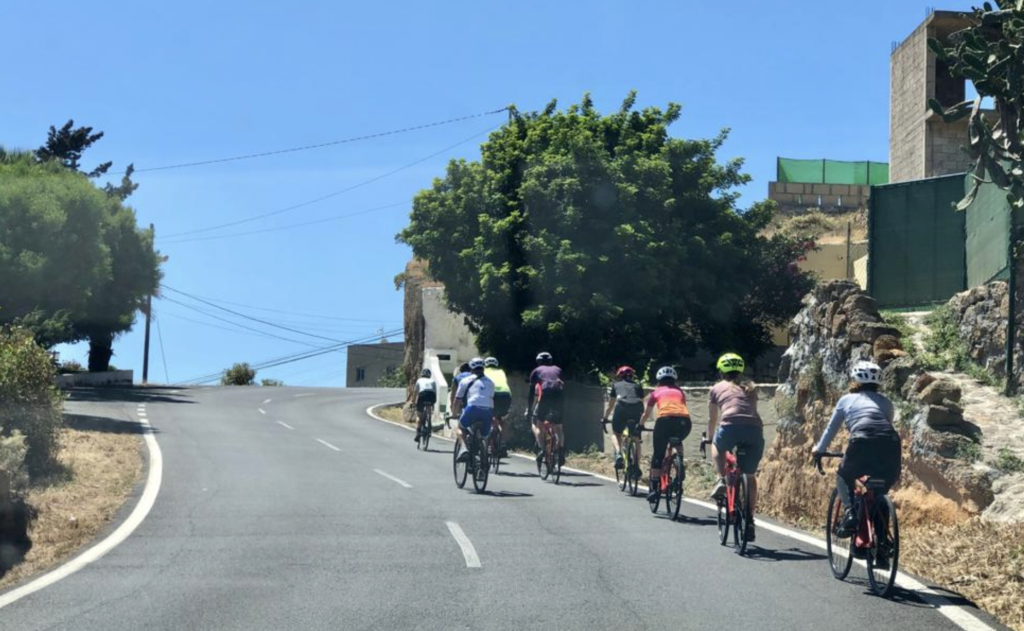
Cultural Insights: Experiencing Tenerife’s Vibrant Culture
Beyond the bike path, Tenerife’s vibrant culture awaits. Local cuisine, traditions, and the warm hospitality of the Canary Islanders offer a rich cultural experience. Exploring local villages and engaging with residents adds depth to your cycling journey.
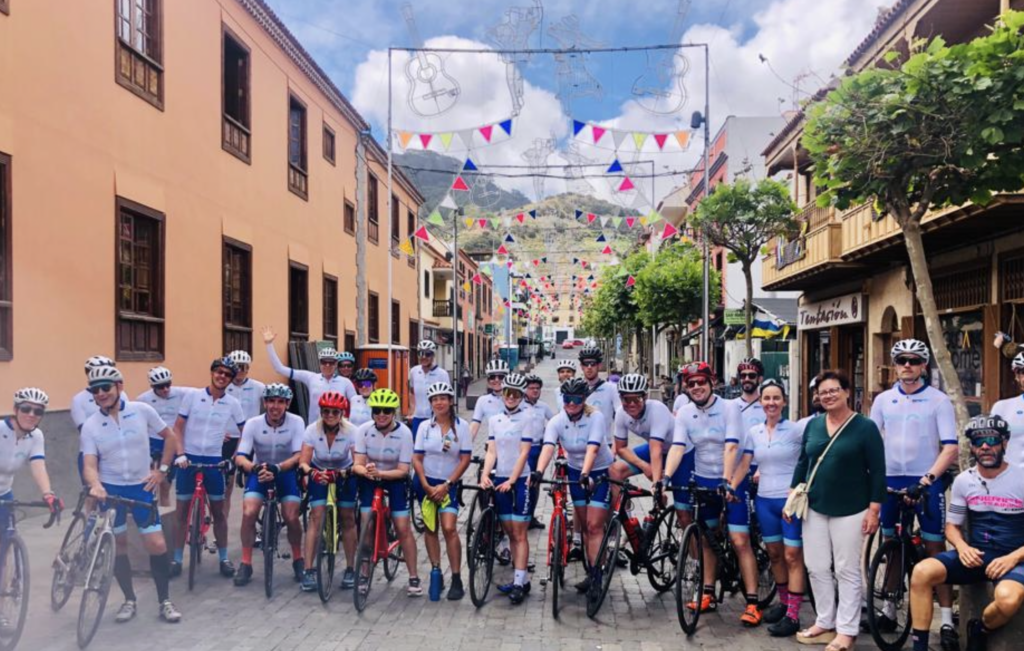
Capturing the Journey: Photography and Memories
Mount Teide’s breathtaking landscapes provide ample opportunities for photography. Capturing these moments not only preserves memories but also inspires others to embark on this journey.
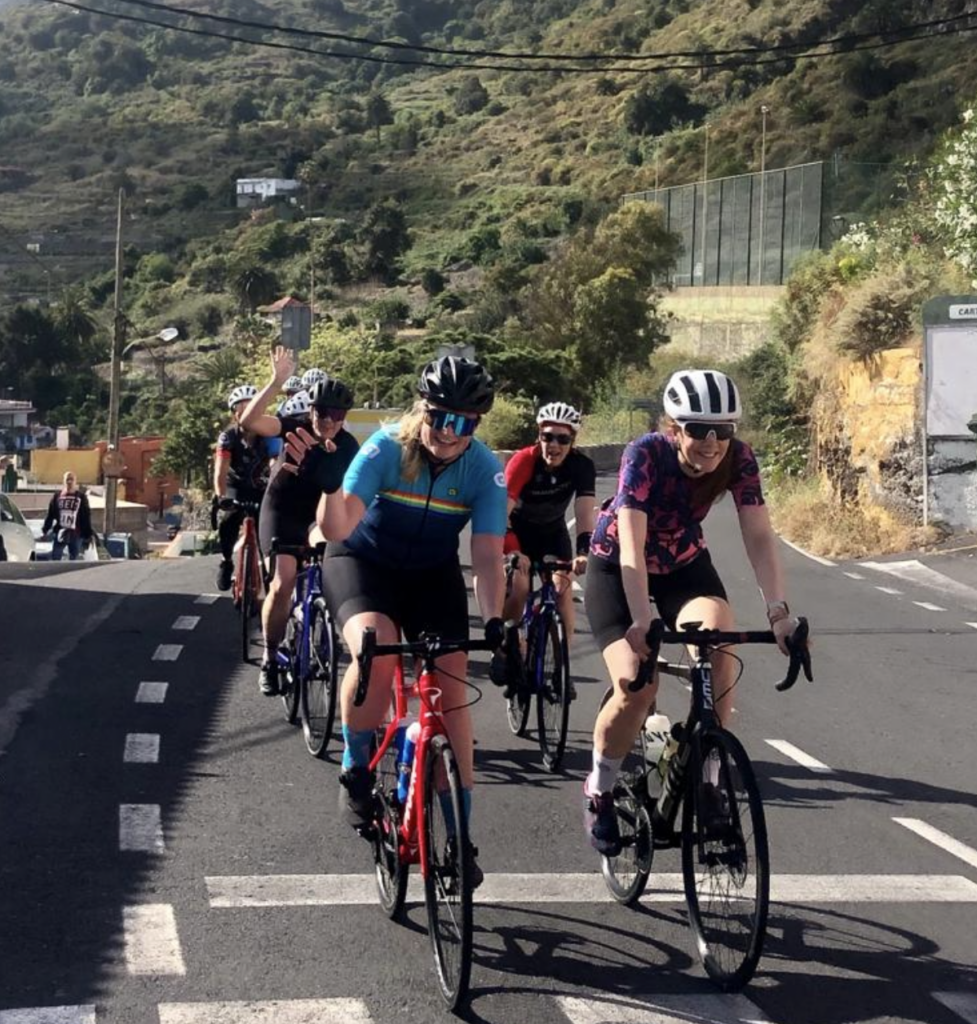
Accommodations and Rest Stops Along the Route
Along the route, various accommodations and rest stops offer comfort and respite. From luxury hotels to quaint inns, there’s a place for every traveler to rest and rejuvenate.
Make it to the Top? Professional Cyclists’ Pit Stop: Parador de las Cañadas
At 2,152 meters, the Parador de las Cañadas hotel serves as a popular recovery spot for many professional cyclists, including the likes of Bradley Wiggins and Team Sky. The hotel offers a chance to soak in the view and reflect on your remarkable ascent.
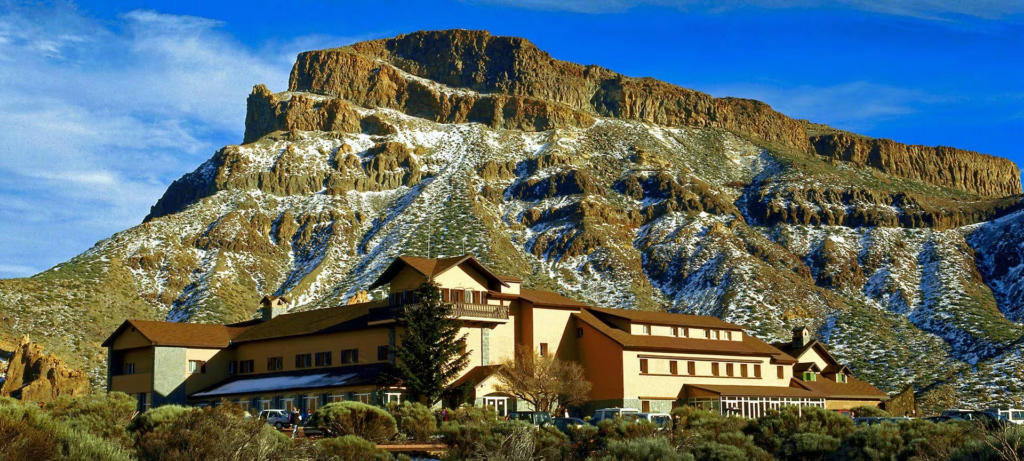
Mount Teide Cycling: FAQs
What is the best time of year to cycle Mount Teide?
The best time to cycle Mount Teide is typically from April to October. During these months, the weather is more stable, with milder temperatures and less likelihood of extreme conditions. It’s important to note that even in these months, weather can be unpredictable at higher altitudes, so always check the forecast before your ride.
Are there any specific training tips for this climb?
Yes, specific training tips for this climb include:
- Endurance Training: Long rides at a steady pace to build stamina.
- Hill Climbs: Regularly train on hills to get accustomed to sustained climbing.
- Interval Training: Incorporate high-intensity intervals to improve cardiovascular strength.
- Altitude Preparation: If possible, train at higher altitudes to acclimatize to the thinner air.
- Strength Training: Focus on core and leg strength, which are crucial for climbing.
- Flexibility and Balance: Activities like yoga can improve flexibility and balance, aiding in overall cycling performance.
What kind of gear is recommended for the ascent?
Recommended gear for the ascent includes:
- A Well-Serviced Road Bike: Preferably with gears suited for climbing.
- Helmet: Always wear a helmet for safety.
- Cycling Clothing: Breathable and moisture-wicking attire.
- Layered Clothing: Include layers for changing weather conditions, especially at higher altitudes.
- Gloves and Sunglasses: For grip and eye protection.
- Sunscreen: High-altitude sun exposure can be intense.
- Hydration Pack/Water Bottles: Staying hydrated is crucial.
- Nutrition: Energy bars/gels for long rides.
- Basic Repair Kit: Including a spare tube, pump, and multitool.
Can beginners attempt this route?
Excellent question. While the route to Mount Teide is challenging due to its length and elevation gain, beginners with a good level of fitness, determination, and proper preparation can attempt it with support. It’s important to train adequately, acclimatize to the altitude, and possibly consider starting with shorter or less challenging climbs.
Are guided tours available for cycling Mount Teide?
Yes, guided tours are available and are a great option, especially for those unfamiliar with the area or wanting additional support. Companies like Tenerife Bike Training offer guided tours, providing local knowledge, technical support, and often include bike rentals.
How can I ensure my safety while cycling the route?
- Always wear a helmet and appropriate gear.
- Carry a mobile phone for emergencies.
- Inform someone of your route and expected return time.
- Stay hydrated and nourished.
- Be aware of weather conditions and prepare accordingly.
- Understand your limits and don’t push beyond your comfort zone, especially on descents.
- Carry a basic repair kit and know how to use it.
- Follow road rules and be mindful of traffic and other cyclists.
Conclusion: Embracing the Mount Teide Cycling Adventure
Cycling Mount Teide is more than just a physical challenge; it’s an adventure that tests your limits and rewards you with unforgettable experiences. Whether you’re seeking a rigorous test of endurance or a scenic ride through one of Spain’s most stunning landscapes, Mount Teide awaits. Ride safe, embrace the adventure, and relish the sense of accomplishment as you conquer this epic journey.
